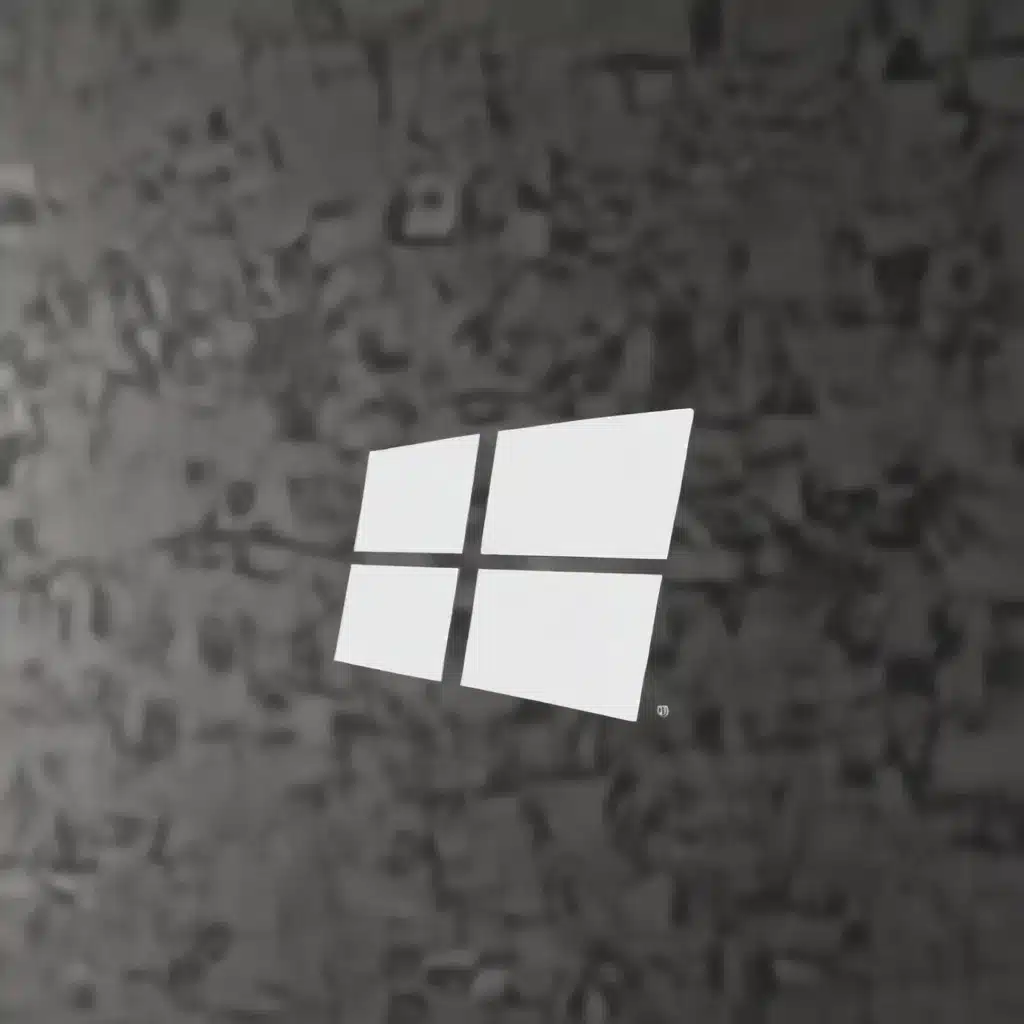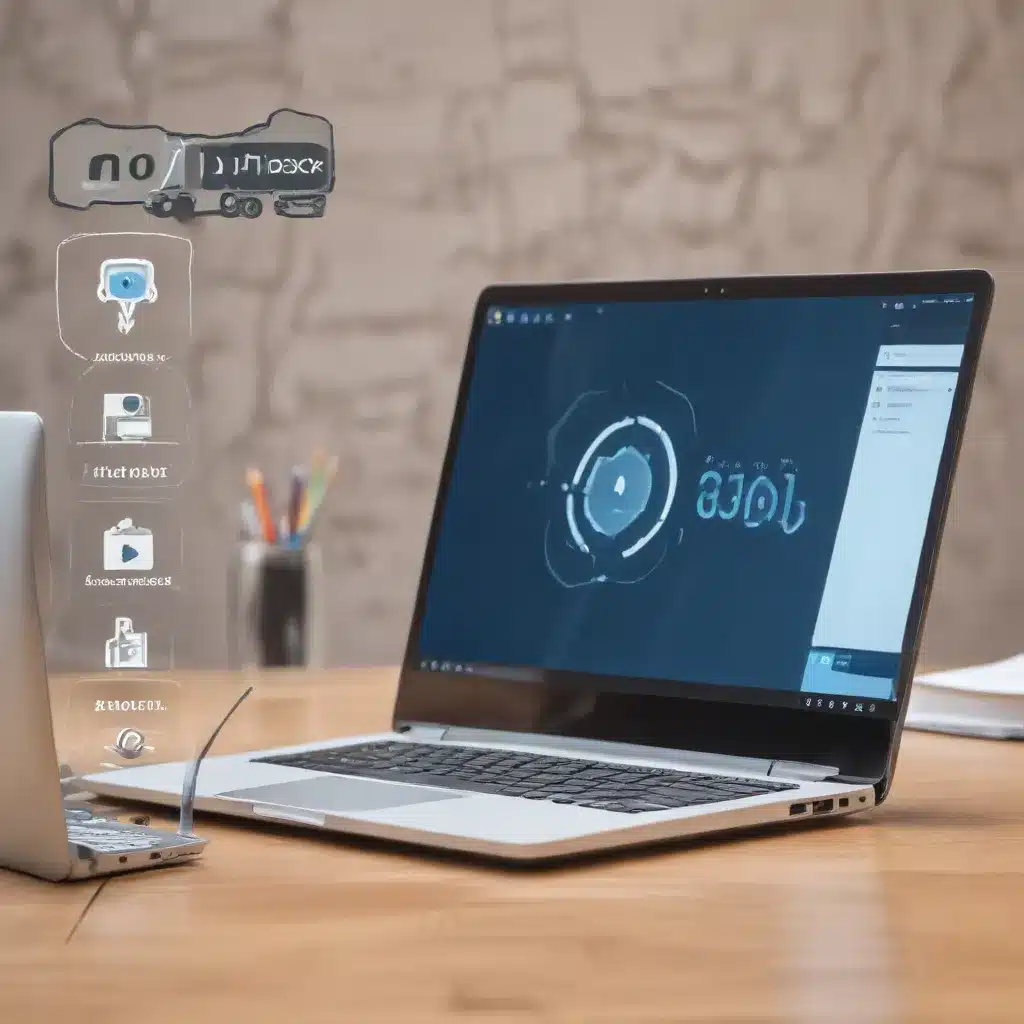Maintaining Computer Systems: Strategies for Peak Performance
As an experienced IT specialist, I’ve seen my fair share of computer issues over the years. One of the most common problems I encounter is sluggish system performance, which can be frustrating for both users and IT professionals alike. However, with the right maintenance techniques, we can ensure our computers are running at their best.
One of the key steps in maintaining computer performance is keeping your operating system and software up-to-date. Regularly checking for and installing the latest security patches and software updates can address a range of issues, from fixing bugs to improving stability and speed. While it may seem like a tedious task, the benefits of a well-maintained system far outweigh the effort required.
Another critical aspect of computer maintenance is managing storage space. Over time, our devices can become inundated with files, applications, and other data, leading to slower performance and potential crashes. By regularly cleaning up unnecessary files, uninstalling unused programs, and optimizing storage, we can free up valuable space and maintain a more responsive system.
Have you ever encountered the dreaded “blue screen of death” or experienced frequent system freezes? These issues can often be traced back to hardware problems, such as failing components or overheating. Proactively monitoring your computer’s hardware health, whether through built-in tools or specialized software, can help you identify and address these issues before they become major problems.
Proper maintenance, however, extends beyond just the physical components of your computer. Regularly backing up your data is also essential to safeguarding your important files and information. In the event of a system failure or data loss, a reliable backup can be the difference between a minor inconvenience and a catastrophic event.
Remember, the key to maintaining your computer’s peak performance is a holistic approach that combines software updates, storage optimization, hardware monitoring, and data protection. By investing a little time and effort into these maintenance tasks, you can extend the lifespan of your devices and enjoy a smooth, reliable computing experience.
Fortifying Your Cybersecurity Defenses
In today’s digital landscape, cybersecurity has become an increasingly critical concern for both individuals and businesses. As an IT specialist, I’ve witnessed firsthand the devastating impact that cyber threats can have, from data breaches to ransomware attacks. That’s why it’s essential to have a robust cybersecurity strategy in place to safeguard your digital assets.
One of the cornerstone principles of effective cybersecurity is the principle of defense-in-depth. This approach involves implementing multiple layers of security measures to create a comprehensive barrier against potential attacks. This can include firewalls, antivirus software, network monitoring tools, and access controls, all working in tandem to detect, prevent, and respond to threats.
Alongside technical measures, user education and awareness are also crucial components of a strong cybersecurity posture. Educating your team or family members on best practices, such as recognizing phishing attempts, using strong passwords, and being cautious with public Wi-Fi networks, can go a long way in reducing the risk of human-centric vulnerabilities.
But what about the emerging threats that are constantly evolving? Staying up-to-date with the latest cybersecurity trends and advancements is vital to maintaining a proactive and adaptable defense. By closely monitoring industry publications, participating in cybersecurity communities, and implementing regular training and simulations, you can ensure your security measures are keeping pace with the ever-changing threat landscape.
Securing your digital infrastructure is not a one-time task; it’s an ongoing process that requires constant vigilance and refinement. Regular vulnerability assessments, penetration testing, and incident response planning can help you identify and address weaknesses before they can be exploited by malicious actors.
Remember, the consequences of a successful cyber attack can be devastating, ranging from financial losses and reputational damage to the potential theft of sensitive information. By prioritizing cybersecurity and implementing a comprehensive strategy, you can protect your digital assets and ensure the continued success and resilience of your organization or personal computing environment.
Embracing Technological Advancements: Transforming the IT Landscape
The IT industry is in a constant state of flux, with new technologies and innovations emerging at a dizzying pace. As an experienced IT specialist, I’ve had the privilege of witnessing and participating in this ever-evolving landscape, and I can tell you that the future of computing is both exciting and transformative.
One of the most significant advancements in recent years has been the rise of cloud computing. By shifting our data and applications to the cloud, we’ve gained access to a wealth of benefits, from increased scalability and flexibility to enhanced collaboration and remote accessibility. However, the cloud also brings with it a unique set of challenges, such as ensuring the security and compliance of our cloud-based resources.
Another area that has seen tremendous growth is the Internet of Things (IoT). The proliferation of connected devices, from smart home appliances to industrial sensors, has opened up a world of new possibilities for automation, data-driven insights, and improved efficiency. As IT professionals, we must stay abreast of the latest IoT technologies and best practices to help our clients or organizations leverage these powerful tools effectively and securely.
But the technological revolution doesn’t stop there. Advancements in artificial intelligence (AI) and machine learning (ML) are transforming the way we approach problem-solving, decision-making, and even customer service. By harnessing the power of these intelligent systems, we can automate repetitive tasks, gain deeper insights from data, and enhance the user experience in ways that were once unimaginable.
One area where AI and ML are making a significant impact is in the realm of cybersecurity. These technologies can help us detect and respond to threats more quickly and accurately, enabling us to stay one step ahead of malicious actors. As an IT specialist, I’ve witnessed firsthand the potential of these tools to revolutionize the way we approach security challenges.
But the technological revolution doesn’t stop there. The rise of 5G networks, the growing adoption of edge computing, and the emergence of quantum computing are all poised to redefine the boundaries of what’s possible in the IT industry. As we embrace these advancements, we must also be mindful of the implications, both in terms of the opportunities they present and the potential challenges they may bring.
To stay ahead of the curve, it’s essential for IT professionals like myself to continuously expand our knowledge, experiment with new technologies, and collaborate with industry peers. By doing so, we can not only navigate the evolving IT landscape but also shape the future of computing and drive meaningful change within our organizations and the wider community.
Empowering Users: Practical Tips for Computer Maintenance and Cybersecurity
As an experienced IT specialist, I’ve had the privilege of working with a diverse range of clients, from tech-savvy individuals to small businesses and large enterprises. Through these interactions, I’ve come to understand the importance of empowering users with practical knowledge and tools to maintain their computer systems and strengthen their cybersecurity defenses.
One of the most common challenges I encounter is users struggling with slow or unresponsive computers. While regular software updates and hardware maintenance are crucial, there are also several simple steps users can take to optimize their system’s performance. For example, regularly clearing browser caches, disabling unnecessary startup programs, and performing disk defragmentation can all contribute to a more responsive and efficient computing experience.
Another area of concern that I frequently address is the topic of data backup and recovery. In today’s digital world, our personal and professional lives are increasingly reliant on the information stored on our devices. However, many users underestimate the importance of regular data backups, only to find themselves scrambling in the face of a system failure or unexpected data loss. By educating users on the various backup solutions available, such as cloud-based storage or external hard drives, we can empower them to safeguard their valuable data and minimize the impact of potential disasters.
When it comes to cybersecurity, user awareness and vigilance are paramount. I often find myself advising clients on best practices for identifying and avoiding phishing attempts, using strong and unique passwords, and being cautious when connecting to public Wi-Fi networks. By equipping users with the knowledge and skills to recognize and mitigate these threats, we can significantly improve the overall security posture of our computing environments.
But the role of an IT specialist goes beyond just addressing technical challenges. I’ve found that one of the most valuable contributions I can make is to foster a sense of digital literacy and confidence among my clients. By taking the time to explain complex concepts in a clear and accessible manner, and by encouraging users to experiment and learn, I’ve seen firsthand how this can unlock a newfound appreciation for technology and a greater willingness to proactively maintain and secure their systems.
Remember, the IT landscape is constantly evolving, and the needs of our users are just as dynamic. As IT professionals, it’s our responsibility to stay informed, adapt to changing trends, and empower our clients with the knowledge and tools they need to thrive in the digital age. By doing so, we can not only enhance the overall computing experience but also contribute to the broader mission of building a more secure and technologically empowered community.
Conclusion: Embracing the Future of IT
As an experienced IT specialist, I’ve had the privilege of navigating the ever-changing landscape of computer technologies, cybersecurity, and industry advancements. From optimizing system performance to fortifying digital defenses, the role of the IT professional has become increasingly multifaceted and essential in today’s digitally-driven world.
Throughout my journey, I’ve encountered a wide range of challenges and opportunities, each one shaping my approach to problem-solving and my commitment to continuous learning. Whether it’s staying up-to-date with the latest software updates, implementing robust cybersecurity measures, or embracing the transformative potential of emerging technologies, the IT specialist’s role is a dynamic and ever-evolving one.
But the true reward of this profession lies in the impact we can have on the lives of our users, whether they are individuals, small businesses, or large enterprises. By empowering our clients with practical knowledge, tailored solutions, and a deeper understanding of the technology that shapes their daily lives, we can help them navigate the complexities of the digital landscape with confidence and resilience.
As I look to the future, I’m filled with a sense of excitement and anticipation. The pace of technological change shows no signs of slowing, and the opportunities for IT professionals to reshape the way we live, work, and interact are boundless. By embracing this evolution, fostering collaboration, and continuously expanding our expertise, we can position ourselves as trusted partners and catalysts for innovation in the ever-evolving world of IT.
So, whether you’re an aspiring IT professional, a seasoned veteran, or simply someone seeking to enhance your computing experience, I encourage you to join me in this remarkable journey. Together, let’s navigate the challenges, seize the opportunities, and redefine the boundaries of what’s possible in the world of IT. The future is ours to shape, and the possibilities are endless.













